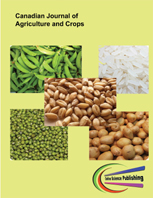Utilization of Good Agricultural Practices and Technologies among Tomato Farmers in Oriire Local Government Area of Oyo State, Nigeria
DOI:
https://doi.org/10.55284/cjac.v7i1.616Keywords:
Awareness, Credit, Constraints, Tomato farmers, Good agricultural practices, Utilization, Information, Technologies.Abstract
The focus of this research is on the use of Good Agricultural Practices (GAPs) among tomato growers in the Oriire community of Oyo, Nigeria. Data were collected from 80 registered tomato growers in the study area through interview guides. The collected data undergoes descriptive statistics and Pearson product-moment correlation. The results showed that the average age of the respondents was 40.2 years old, and 63.7% of the respondents were men. The average annual income is ₦242,620. The awareness of GAPs is high (88.8%), but the usage is very low. About 87.5% of respondents received GAP information from relatives and friends. Tomato growers believe that high technical costs and access to credit are the main obstacles to GAP technology. The results show that there is a significant relationship between the selected information sources and the degree of use of GAP technology in tomato production. The study concludes that information channels, high technology costs, and credit availability are impacting GAPs adoption. Agricultural advisors should be ready to distribute GAPs to tomato growers and continuously train tomato growers to adopt and use GAPs.


